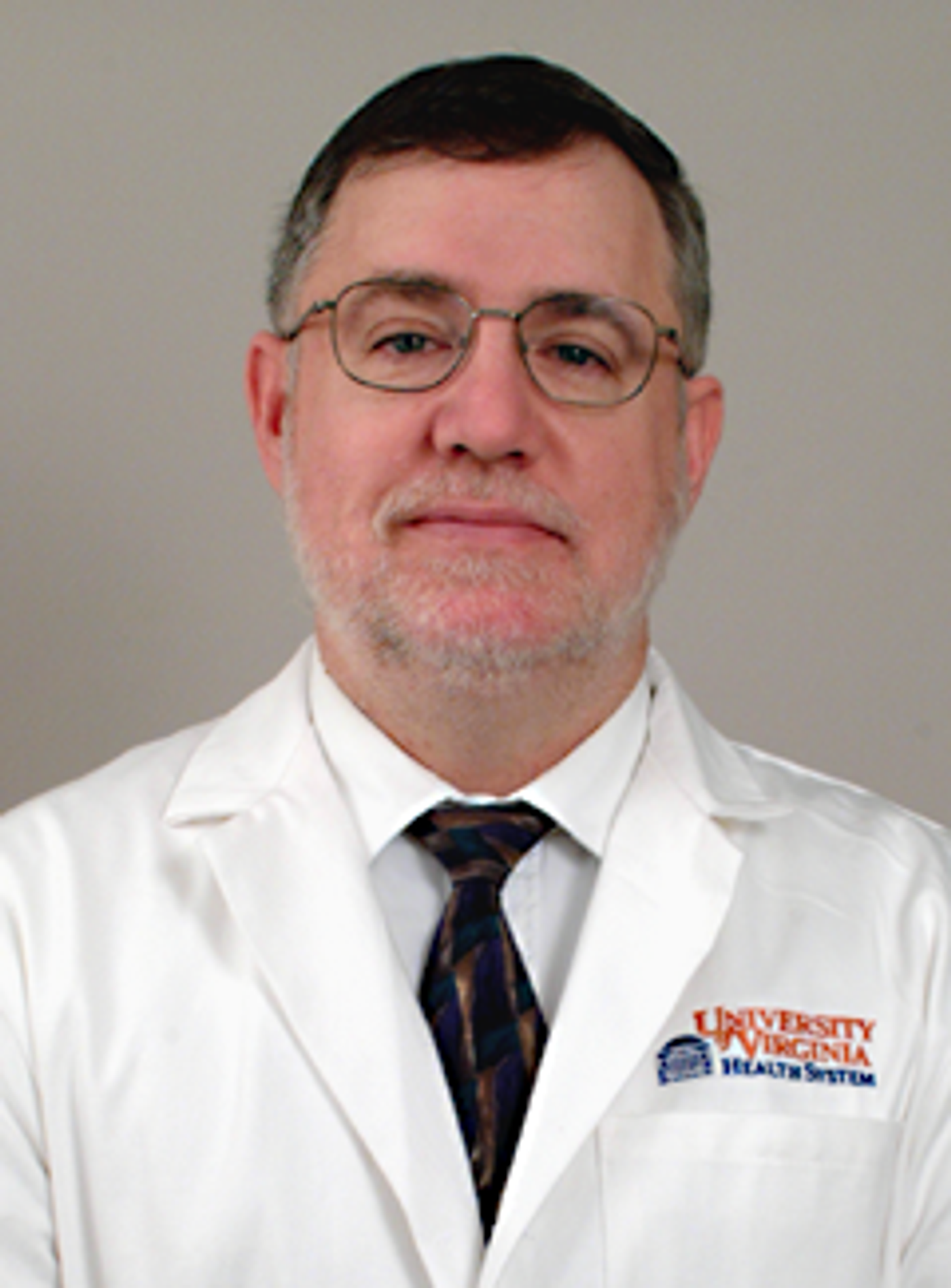Genetics & Genomics
Gorilla's Y chromosome closer to a guy than a chimp
MAR 03, 2016 8:21 AM PST
Share
New ACOG Guidelines, Reading Between the Lines
 When one of the country’s top groups representing the interests of women’s health care physicians puts out a new document for its members, changes can be bold or very subtle, yet still significant.
When one of the country’s top groups representing the interests of women’s health care physicians puts out a new document for its members, changes can be bold or very subtle, yet still significant.The American College of Obstetricians and Gynecologists (ACOG) recently issued Practice Bulletin Number 157, which contains some revised and updated recommendations for cervical cancer screening. Changes speak to the urgent need for greater use of the 9-valent HPV vaccine for young people, options for using the FDA-approved Human papillomavirus (HPV) testing algorithm for primary screening, and for screening women living with human immunodeficiency virus (HIV).
We spoke to industry experts for their insight into the changes and to discuss real-world applications.
The call for vaccination
For a long time, the medical community’s approach toward thwarting cervical cancer could be called “secondary prevention,” safeguarding against cancer by screening for and eradicating precancer. We have since learned that precancerous changes that lead to cancer are caused by HPV. “So if you prevent HPV infections, then you would prevent the process of carcinogenesis before it even begins,” says Mark H. Stoler, MD, professor of pathology, clinical obstetrics, and gynecology, Division Surgical Pathology and Cytopathology, University of Virginia Health System, Charlottesville, Va. “That’s why vaccination is thought as primary prevention, because you’re preventing the etiologic agent that causes almost all cervical cancer.” Stoler is known as a top expert worldwide in cytopathology, gynecologic pathology, and HPV biology. “HPV vaccination, in my opinion … is one of the greatest advances in the history of medicine. There’s absolutely no reason that children should not get this vaccine. It’s one of the most-effective vaccines ever developed.”
The vaccine’s backstory has a solid pedigree, he notes. “Incredibly well-done trials, near-perfect efficacy for the targeted-HPV types, [and] three decades of building a biological rationale for the vaccine, giving us the ability to prevent HPV infections that cause—now with Gardasil 9—upwards of 80 to 90 percent of cervical cancers and precancer, and more than 90 percent of genital warts,” he says. “There are no clinical trials with these kinds of efficacy for any other infectious disease, and that’s been consistent throughout trials for all of the [HPV] vaccines.”
“In countries around the world where people have taken vaccination to heart, and where they have a ‘different perspective’ on the relationship between the healthcare system and individual choice, places like Australia, Scandinavia, most of the countries in Europe—countries where they’ve used the vaccine regularly in the population with high coverage—they’re seeing dramatic declines in the targeted diseases,” Stoler says. In these instances, “Pap smear abnormalities have fallen in half, abnormal biopsy rates have fallen 30% to 50%, and virtually no new clinical cases of genital warts at all.” He calls this approach a “huge success.”
ACOG specifically mentions the availability of the 9-valent HPV vaccine (Gardasil 9) as one of the reasons for its update.
“Clearly, the people who need to be vaccinated are the people who are young individuals, before they’re exposed to HPV,” Stoler says. This is why the target group is comprised of young people between the ages of 9 and 12, or 9 and 13, with some extension up into the later teens and 20s in case they don’t get it when they ideally should. “It’s an embarrassment and a disservice to the populations we serve that our children are not getting high-coverage uptake of the HPV vaccine.”
Some who say no to the vaccine are influenced by anti-vaccine lobbies and widely disseminated misinformation on the Internet about vaccine safety, Stoler notes. Countering these groups’ safety issue concerns, the vaccine has now been evaluated multiple times by countries in Europe and by the US monitoring systems. “Upwards of 200 million doses of these vaccines have been given worldwide,” he says.
Stoler’s expertise comes with the disclosure, meant to head off any appearance of bias, that he is one of four pathologists who read all of the diagnoses that were the disease efficacy end-points of the Gardasil 9 trials. “So I have a conflict of interest. I know the data,” he says. He is not the only one familiar with the data. The Centers for Disease Control and Prevention (CDC) on February 1 updated its vaccine recommendations to include HPV vaccines, including Gardasil 9, to some children as young as 9 years old, and for all adolescents who are 11 to 12 years old.
“Gardasil 9 gives you the opportunity to reemphasize and catch up to what we should have been doing for almost the last 10 years,” Stoler says, recalling that the vaccine trials were run in the United States, and that, while they were worldwide trials, the vaccines are manufactured by US companies, and the initial approvals for the vaccines were done in the United States.
Finally, the medical establishment in the United States has started to push back against the anti-vaccine misinformation so common on the Web. Stoler cites the CDC’s newly revised guidelines, ACOG’s document emphasizing the importance of the HPV vaccine, and the National Cancer Institute’s Comprehensive Cancer recent declaration. “They’re trying to emphasize to the population that we have this tremendous advance, but why are we not using it?” Stoler says. “We vaccinate so well for all kinds of other diseases, yet why are we not implementing HPV vaccination for the good of our patients?” The problem sits squarely on the shoulders of pediatricians and family practice physicians, because they are the ones, in his opinion, who oversee the care of adolescent and preadolescent kids and they dictate the need to get vaccinated to the patients.
Stoler goes so far as to say that he believes the rates of HPV vaccine uptake within a physician’s practice should become a quality measure, a term that refers to the big-picture, complex process of creating, providing, and evaluating best practices in health care.
Can we talk: HPV test for primary screening?
Using HPV testing as the primary screening test is a brand new option compared to testing methods used in the last 50 years, and a lively ongoing debate in medical centers across the country pivots on using this method or co-testing, i.e., the practice of doing both a Pap test and an HPV test on everyone.
So it comes as no surprise that Stoler and his colleague, pathologist Frederick S. Nolte, PhD, professor, vice chair for Laboratory Medicine, director of Clinical Laboratories/Molecular Pathology/Point-of-Care Testing, Department of Pathology & Laboratory Medicine, Medical University of South Carolina (MUSC), Charleston, SC, often speak about the issue of primary HPV screening.
 ACOG discusses the option of primary screening in the bulletin, and while not offering a “recommendation” for its use (none of the US medical societies have done so yet), Stoler reads between the lines and sees forward progress in that direction. “They haven’t gone out on a limb, but they’re slowly moving the dial, as it were. So, if you read the subtlety in the ACOG update, it’s ‘Yeah, if you want to do primary HPV testing, this is an acceptable thing to do.’ ” Stoler says. “The way the bar has moved is, if you look at the 2012 American Cancer Society (ACS) guidelines, people talked about ‘You can use just Pap smears.’ And then they talk about the different intervals, three years or five years. Or you can use co-testing, but HPV primary screening is not ready for prime time. But now, three years later, the debate has really shifted to co-testing versus HPV primary as the two best methods for effective screening.”
ACOG discusses the option of primary screening in the bulletin, and while not offering a “recommendation” for its use (none of the US medical societies have done so yet), Stoler reads between the lines and sees forward progress in that direction. “They haven’t gone out on a limb, but they’re slowly moving the dial, as it were. So, if you read the subtlety in the ACOG update, it’s ‘Yeah, if you want to do primary HPV testing, this is an acceptable thing to do.’ ” Stoler says. “The way the bar has moved is, if you look at the 2012 American Cancer Society (ACS) guidelines, people talked about ‘You can use just Pap smears.’ And then they talk about the different intervals, three years or five years. Or you can use co-testing, but HPV primary screening is not ready for prime time. But now, three years later, the debate has really shifted to co-testing versus HPV primary as the two best methods for effective screening.”Nolte appears to take a more literal view of ACOG’s intent. The ACOG document, and a document like the one that preceded it, the Interim Guidance by the other groups, gives clinicians the option to use HPV testing as a primary screen, Nolte says, adding that there is evidence that suggests it is a better way to go. “There’s also evidence that suggests that it might not be the best way to go,” Nolte says. “And, until it becomes a recommendation, I’m not sure how many clinicians are actually going to go down that path. I’m not an advocate of primary screening, because I’m still not sure it’s the best thing to do.”
Nolte interprets the message from the medical societies and organizations as stopping short of recommending primary testing, but rather stating that it is an acceptable alternative to co-testing. “They don’t say you should do it,” Nolte says. “They say if you choose to do it, here’s the data that supports it and how it should be performed. I don’t know what it’s going to take to move the needle in clinical practice to [a recommendation for] HPV as a primary screening test, and I’m not 100 percent convinced that we should do that.”
Nolte serves on the FDA’s Microbiology Devices Panel, as a reviewer for diagnostic tests. He also has disclosures, including when the digene/Qiagen HPV Test (later approved by the FDA)—which detects high-risk types of the HPV virus—sought its co-testing claim. He has also served on a scientific advisory board for Gen-Probe/Hologic, which makes an HPV test, and he participated in a mock-FDA panel that helped Roche get its primary screening claim.
Keeping in mind another conflict-of-interest disclosure for Stoler, who was one of the authors of the scientific papers that prove primary testing is an acceptable choice as a part of the ATHENA trial (a broad, prospective clinical study with 47,000 women enrolled that gauged the performance of the cobas HPV Test, from Roche), he reminds us that the FDA’s approval for primary HPV testing in April 2014 covered not just a test, but a whole algorithm. “Just like co-testing is an algorithm, systematic Pap smear screening is an algorithm,” Stoler says. “The HPV primary screening algorithmic process was approved by the FDA, and so, the Society of Gynecologic Oncology, and now ACOG, after critically and independently reviewing the evidence, has now said this is an acceptable choice.”
Good News for Women with HIV
ACOG’s document offers new recommendations for screening women living with HIV.
Stoler sees ACOG’S position as pulling back, “appropriately so.” He offers some background, for context. When we were first learning about human immunodeficiency virus (AIDS), and that it was caused by HIV, the National Institutes of Health and other organizations drew up a list of diseases that would be highly associated with AIDS. Cervical cancer was on that list. This spurred the realization that people with HIV have compromised immune systems, and people with compromised immune systems don’t handle viral infections properly. “We should screen you with increased frequency because you’re at increased risk for developing cervical cancer,” Stoler says. However, the experience over the last 10 to 15 years has taught us that while it is true that patients with HIV have problems handling their HPV infections, screening tests behaved just the same. “And the rates of transition to invasive cancer are not super-fast relative to the normal population.” It followed that as long as patients were being screened, they could be screened just like anybody else. “If the screening test is abnormal, we can deal with it just like everybody else. If the screening test is normal, they probably don’t need to be screened super frequently like we were.”
Nolte filters ACOG’s document through a laboratorian’s perspective. MUSC serves as South Carolina’s major comprehensive academic medical center. He is not certain what portion of the medical center’s population screened for cervical cancer is HIV- infected, but says it appears as if the recommendation would lessen the workload for the laboratory. “If you go into a co-testing algorithm, you go toward that, which is pretty much where we are,” Nolte says. “I looked at the ordering patterns of our ob-gyns and, probably, better than 85 percent of them appear to be using a co-testing algorithm. So, if that’s adopted for all women greater than age 30, then yes, that would be less work for the lab, since there should be longer intervals between screening in women with normal cytology and negative HPV tests. That’s a good thing. We don’t want to be doing unnecessary laboratory testing.”
Who can argue with that?
Some statistics, for perspective
Some 79 million people in the United States are infected with HPV, and another 14 million people become newly infected each year, according to the Centers for Disease Control and Prevention (CDC). HPV is so common, the CDC notes, that most men and women who are sexually-active will be infected with a minimum of one type of HPV at some time. It also notes that in spite of some increases, “coverage estimates for [HPV] vaccine remained low in 2014 and continue to lag behind rates for the Tdap and quadrivalent meningococcal conjugate vaccines. Four out of ten adolescent girls and six out of ten adolescent boys haven’t started the HPV vaccine series, and are vulnerable to cancers caused by HPV infections.”
The CDC reports that more than 11,000 women in the United States get cervical cancer each year. The American Cancer Society estimates that in 2016 in the United States, some 12,990 new cases of invasive cervical cancer will be diagnosed, and more than 4,100 women will die from the disease.
Sponsored by

You May Also Like
Loading Comments...








